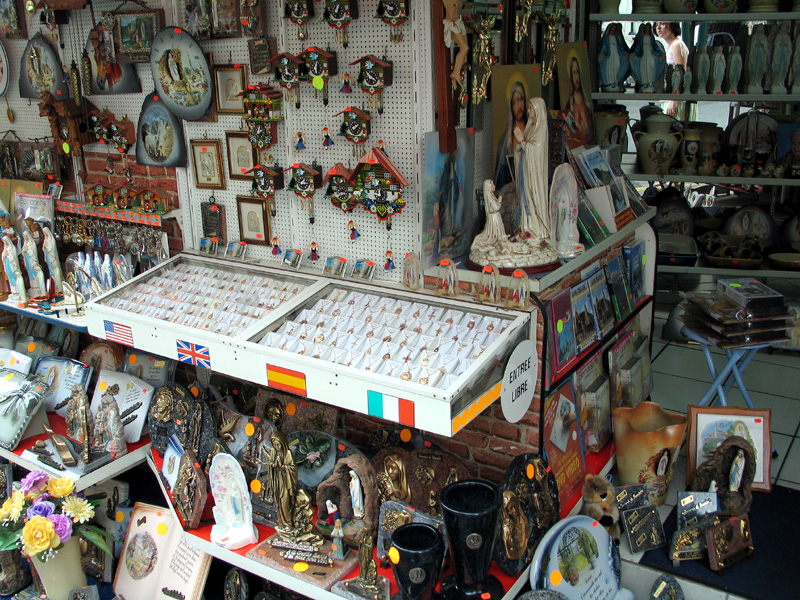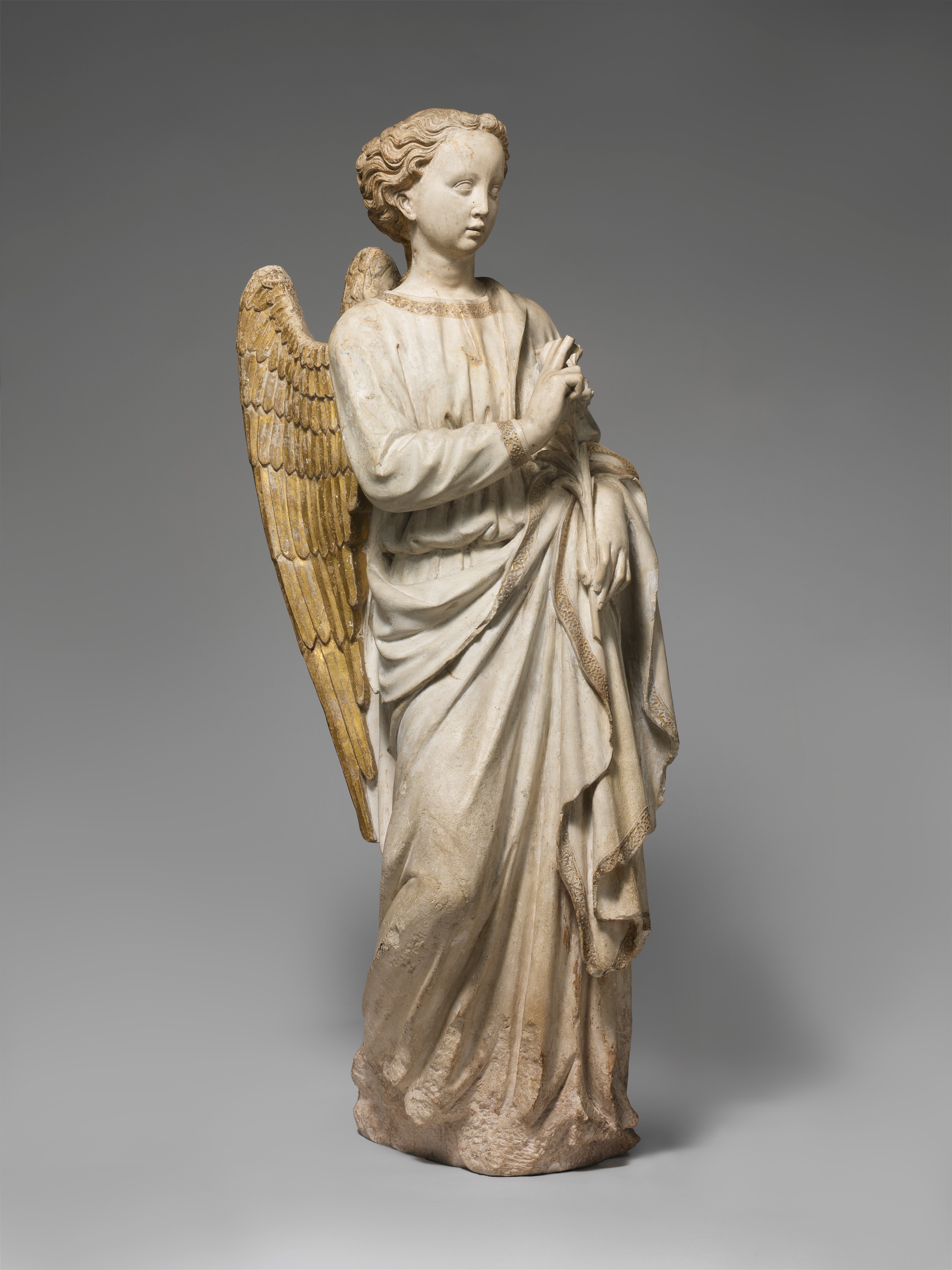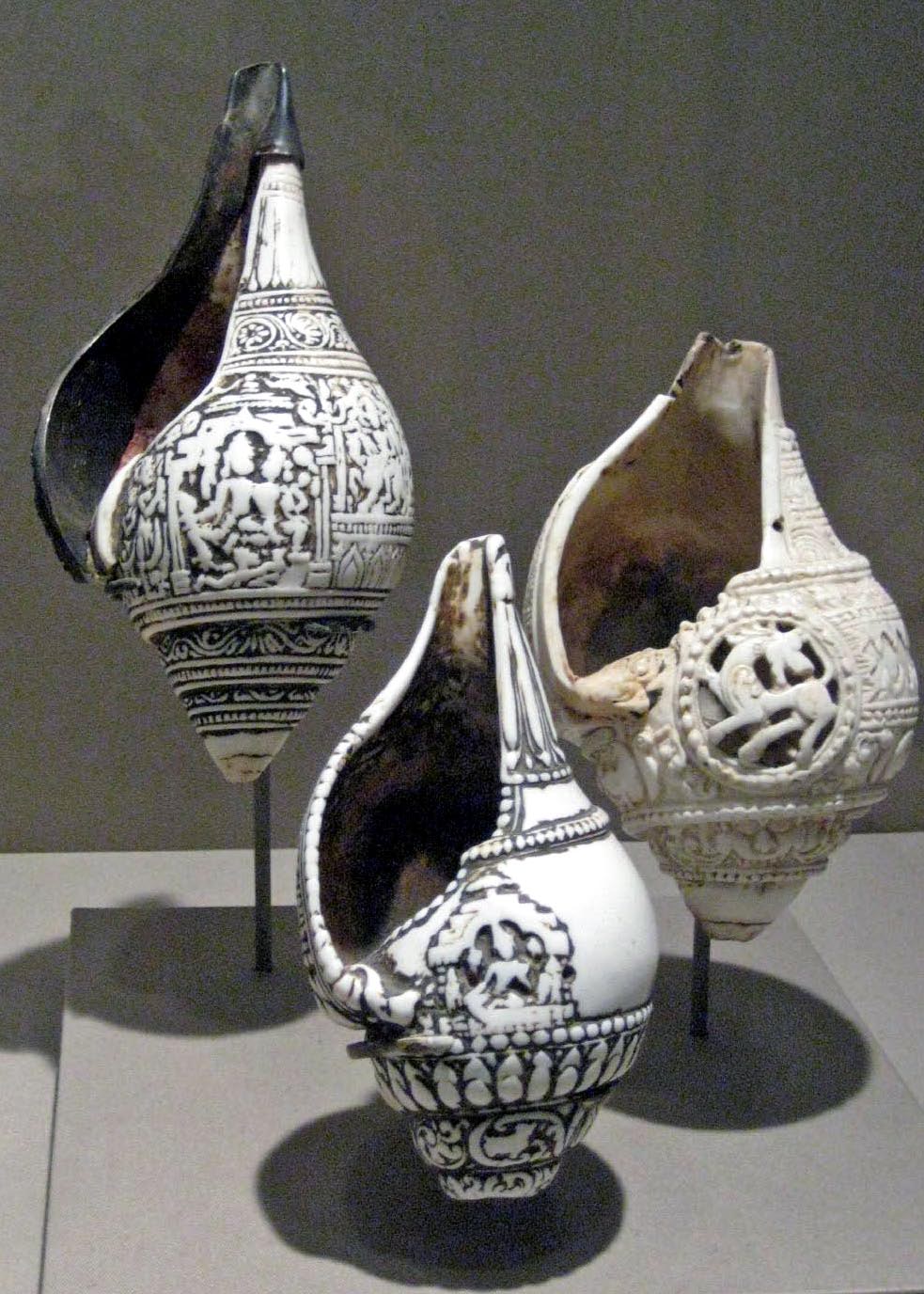|
Devotional Object
Devotional objects (also, devotional articles, devotional souvenirs, devotional artifacts) are religious souvenirs (figurines, pictures, votive candles, books, amulets, and others), owned and carried by the religious, who see them as imbued with spiritual values, and use them for votive offering. Production and sales of devotional articles have become a widespread industry in the vicinity of various religious sites all over the world. Devotional articles have a long history; in Christianity they have been mentioned in historical works such as those related to Paul the Apostle and in older religions they have been traced as far back as the times of ancient Egypt and ancient Mesopotamia. International law defines "devotional articles" as including "the Bible, the Koran, prayer and service books, hymnals, ritual articles, sacramental wine, crucifixes and rosaries". Such items may be natural and hardly processed (such as earth from the Holy Land), but majority of modern devotional ... [...More Info...] [...Related Items...] OR: [Wikipedia] [Google] [Baidu] |
Lourdes Bondieuseries 5
Lourdes (, also , ; ) is a market town situated in the Pyrenees. It is part of the Hautes-Pyrénées Departments of France, department in the Occitania (administrative region), Occitanie region in southwestern France. Prior to the mid-19th century, the town was best known for its Château fort de Lourdes, Château fort, a fortified castle that rises up from a rocky escarpment at its center. In 1858, Lourdes rose to prominence in France and abroad due to the Lourdes apparitions, Marian apparitions to the peasant girl Bernadette Soubirous (later Canonization, canonized a saint by the Catholic Church for her virtuous life). Shortly thereafter, the city and its Sanctuary of Our Lady of Lourdes became among the world's most important sites for pilgrimage and religious tourism. History Antiquity The current municipal area of Lourdes was inhabited in prehistoric times. In Ancient Rome, Roman times, from the first century BC, it was an oppidum hill on the site of the present-day fortr ... [...More Info...] [...Related Items...] OR: [Wikipedia] [Google] [Baidu] |
Rosary
The Rosary (; , in the sense of "crown of roses" or "garland of roses"), formally known as the Psalter of Jesus and Mary (Latin: Psalterium Jesu et Mariae), also known as the Dominican Rosary (as distinct from other forms of rosary such as the Rosary-based prayers, Franciscan Crown, Bridgettine Rosary, Rosary of the Holy Wounds, etc.), refers to a set of prayers used primarily in the Catholic Church, and to the physical string of knots or beads used to count the component prayers. When referring to the prayer, the word is usually capitalized ("the Rosary", as is customary for other names of prayers, such as "the Lord's Prayer", and "the Hail Mary"); when referring to the prayer beads as an object, it is written with a lower-case initial letter (e.g. "a rosary bead"). The prayers that compose the Rosary are arranged in sets of ten Hail Marys, called "decades". Each decade is preceded by one Lord's Prayer ("Our Father"), and traditionally followed by one Glory Be. Some Catholics ... [...More Info...] [...Related Items...] OR: [Wikipedia] [Google] [Baidu] |
Amulet
An amulet, also known as a good luck charm or phylactery, is an object believed to confer protection upon its possessor. The word "amulet" comes from the Latin word , which Pliny's ''Natural History'' describes as "an object that protects a person from trouble". Anything can function as an amulet; items commonly so used include statues, coins, drawings, plant parts, animal parts, and written words. Amulets which are said to derive their extraordinary properties and powers from magic or those which impart luck are typically part of folk religion or paganism, whereas amulets or Sacramental, sacred objects of Organized religion, formalised mainstream religion as in Christianity are believed to have no power of their own without faith in Jesus and being blessing, blessed by a clergyman, and they supposedly will also not provide any preternatural benefit to the bearer who does not have an Disposition#Religion, appropriate disposition. Talisman and amulets have interchangeable meanings. ... [...More Info...] [...Related Items...] OR: [Wikipedia] [Google] [Baidu] |
Angel
An angel is a spiritual (without a physical body), heavenly, or supernatural being, usually humanoid with bird-like wings, often depicted as a messenger or intermediary between God (the transcendent) and humanity (the profane) in various traditions like the Abrahamic religions. Other roles include protectors and guides for humans, such as guardian angels and servants of God. In Western belief-systems the term is often used to distinguish benevolent from malevolent intermediary beings. Emphasizing the distance between God and mankind, revelation-based belief-systems require angels to bridge the gap between the earthly and the transcendent realm. Angels play a lesser role in monistic belief-systems, since the gap is non-existent. However, angelic beings might be conceived as aid to achieve a proper relationship with the divine. Abrahamic religions describe angelic hierarchies, which vary by religion and sect. Some angels have specific names (such as Gabriel or Mich ... [...More Info...] [...Related Items...] OR: [Wikipedia] [Google] [Baidu] |
Religious Relics
In religion, a relic is an object or article of religious significance from the past. It usually consists of the physical remains or personal effects of a saint or other person preserved for the purpose of veneration as a tangible memorial. Relics are an important aspect of some forms of Buddhism, Christianity, Islam, shamanism, and many other religions. ''Relic'' derives from the Latin ''reliquiae'', meaning "remains", and a form of the Latin verb ''relinquere'', to "leave behind, or abandon". A reliquary is a shrine that houses one or more religious relics. In classical antiquity In ancient Greece, a city or sanctuary might claim to possess, without necessarily displaying, the remains of a venerated hero as a part of a hero cult. Other venerable objects associated with the hero were more likely to be on display in sanctuaries, such as spears, shields, or other weaponry; chariots, ships or figureheads; furniture such as chairs or tripods; and clothing. The sanctuary of the ... [...More Info...] [...Related Items...] OR: [Wikipedia] [Google] [Baidu] |
Catholic Saints
This is an incomplete list of humans and angels whom the Catholic Church has canonized as saints. According to Catholic theology, all saints enjoy the beatific vision. Many of the saints listed here are found in the General Roman Calendar, while others may also be found in the '' Roman Martyrology'';Roman Martyrology by Month 1916 Edition Geoffrey K. Mondello, Boston Catholic Journal still others are particular to local places or [...More Info...] [...Related Items...] OR: [Wikipedia] [Google] [Baidu] |
Superstition
A superstition is any belief or practice considered by non-practitioners to be irrational or supernatural, attributed to fate or magic (supernatural), magic, perceived supernatural influence, or fear of that which is unknown. It is commonly applied to beliefs and practices surrounding luck, amulets, astrology, fortune telling, Spirit (animating force), spirits, and certain paranormal wikt: entity, entities, particularly the belief that future events can be foretold by specific unrelated prior events. The word ''superstition'' is also used to refer to a religion not practiced by the majority of a given society regardless of whether the prevailing religion contains alleged superstitions or to all religions by the antireligion, antireligious. Contemporary use Definitions of the term vary, but they commonly describe superstitions as irrational beliefs at odds with scientific knowledge of the world. Stuart Vyse proposes that a superstition's "presumed mechanism of action is inc ... [...More Info...] [...Related Items...] OR: [Wikipedia] [Google] [Baidu] |
Supernatural
Supernatural phenomena or entities are those beyond the Scientific law, laws of nature. The term is derived from Medieval Latin , from Latin 'above, beyond, outside of' + 'nature'. Although the corollary term "nature" has had multiple meanings since the ancient world, the term "supernatural" emerged in the Middle Ages and did not exist in the ancient world. The supernatural is featured in folklore and religious contexts, but can also feature as an explanation in more secular contexts, as in the cases of superstitions or belief in the paranormal. The term is attributed to non-physical entity, non-physical entities, such as angels, demons, gods and ghost, spirits. It also includes claimed abilities embodied in or provided by such beings, including Magic (supernatural), magic, telekinesis, levitation (paranormal), levitation, precognition and extrasensory perception. The supernatural is hypernymic to religion. Religions are standardized supernaturalist worldviews, or at least m ... [...More Info...] [...Related Items...] OR: [Wikipedia] [Google] [Baidu] |
Charles H
Charles is a masculine given name predominantly found in English and French speaking countries. It is from the French form ''Charles'' of the Proto-Germanic name (in runic alphabet) or ''*karilaz'' (in Latin alphabet), whose meaning was "free man". The Old English descendant of this word was '' Ċearl'' or ''Ċeorl'', as the name of King Cearl of Mercia, that disappeared after the Norman conquest of England. The name was notably borne by Charlemagne (Charles the Great), and was at the time Latinized as ''Karolus'' (as in ''Vita Karoli Magni''), later also as '' Carolus''. Etymology The name's etymology is a Common Germanic noun ''*karilaz'' meaning "free man", which survives in English as churl (James (wikt:Appendix:Proto-Indo-European/ǵerh₂-">ĝer-, where the ĝ is a palatal consonant, meaning "to rub; to be old; grain." An old man has been worn away and is now grey with age. In some Slavic languages, the name ''Drago (given name), Drago'' (and variants: ''Drago ... [...More Info...] [...Related Items...] OR: [Wikipedia] [Google] [Baidu] |
Shankha
A Turbinella pyrum, shankha () has religious ritual importance in Hinduism. In Hinduism, the shankha called panchajanya is a sacred emblem of the Hindu preserver deity Vishnu. It is still used as a trumpet in Hindu ritual, and in the past was used as a war trumpet. According to Arunava Bose, "The shankha is praised in Hindu scriptures as a giver of fame, longevity and prosperity, the cleanser of sin and the abode of goddess Lakshmi, who is the goddess of prosperity and consort of Vishnu". The shankha is displayed in Hindu art in association with Vishnu. As a symbol of water, it is associated with female fertility and serpents (nāgas). The shankha is one of the eight auspicious symbols of Buddhism, the Ashtamangala, and represents the pervasive sound of Buddhism. Characteristics This gastropod shell, shell is from a sea snail species ''Turbinella pyrum'' in the family Turbinellidae. This species is found living in the Indian Ocean and surrounding seas. The shell is porcelaneou ... [...More Info...] [...Related Items...] OR: [Wikipedia] [Google] [Baidu] |
Tulasi In Hinduism
Tulasi (), Tulsi or Vrinda ( holy basil) is a sacred plant in Hindu tradition. Hindus regard it as an earthly manifestation of the goddess Tulasi; she is regarded as the avatar of Lakshmi, and thus the consort of the god Vishnu. In another iteration, as Vrinda, she is married to Jalandhara. The offering of its leaves is recommended in ritualistic worship of Vishnu and his avatars, like Krishna and Vithoba. Traditionally, the tulasi is planted in the center of the central courtyard of Hindu houses. The plant is cultivated for religious purposes, and for its essential oil. Nomenclature In the Vedas, Tulasi ("matchless") is known as ''Vaishnavi'' ("belonging to Vishnu"), ''Vishnu Vallabha'' ("beloved of Vishnu"), ''Haripriya'' ("beloved of Vishnu"), ''Vishnu Tulasi''. The Tulasi with green leaves is called ''Shri-Tulasi'' ("fortunate Tulasi") or ''Lakshmi-Tulasi''; Shri is also a synonym for Lakshmi, Vishnu's spouse. This variety is also known as ''Rama-Tulasi'' ("bright Tulasi ... [...More Info...] [...Related Items...] OR: [Wikipedia] [Google] [Baidu] |
Kalasha
A kalasha, also called Pūrṇa-Kalaśa, Pūrṇa-Kumbha, Pūrṇa-Ghaṭa, also called ghat or ghot or kumbh ( , Telugu: కలశము Kannada: ಕಳಶ literally "pitcher, pot"), is a metal (brass, copper, silver or gold) pot with a large base and small mouth. It is employed in the rituals in Hindu, Jain, and Buddhist traditions as a ceremonial offering to the deity or to an honoured guest and as an auspicious symbol used to decorate shrines and buildings. Sometimes "kalasha" also refers to such a pot filled with water and topped with a coronet of mango leaves and a coconut. This combination is often used in Hinduism, Hindu rites and depicted in Hindu iconography. The entire arrangement is called Purna-Kalasha (), Purna-Kumbha (), or Purna-ghata (). Each of these names literally means "full or complete vessel" when the pot is referred to as the Kalasha (to avoid confusion, this article will refer to the pot as Kalasha and the entire arrangement as Purna-Kalasha). Sometime ... [...More Info...] [...Related Items...] OR: [Wikipedia] [Google] [Baidu] |








